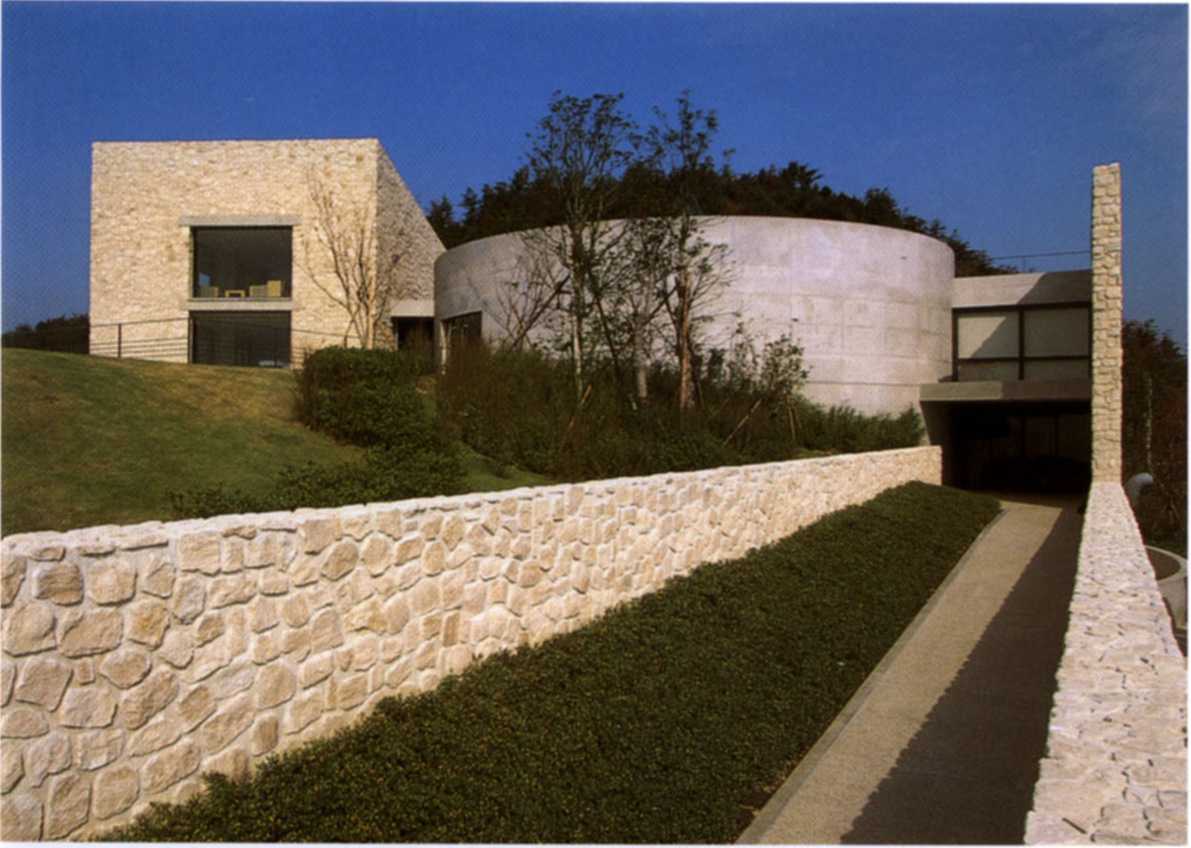New Forms Taschen 087


Tadao Ando
Naoshima Museum and Mot«l Naoshima. Kagawa, Japan.
Phasel, 1990-92
Located on a relatively unspoiled island in the Inland Sea of Japan, this combined hotel and muscum of contemporary art calls on the architect's acute sense of topo-graphy. By digging mto the site, Tadao Ando has created somc-thing akin to an earthwork. As he says, 'There is a plan to have me design one building a year all over this area. Every time you go, there will be something under construc-tion. This will be kept up for ten, twenty years. This project in ■ts conception is very much like contemporary an.'
between Shikoku and Honshu, this striking complex includes a luxurious hotel. As unexpected as the museum/hotel combination may seem, it is important to know in this instance that new construction is severely restriaed on an island like Naoshima, unless the project involves a cultural component. Oespite a number of interesting works of contemporary art, and a perfectly viable exhibition space, the Naoshima Museum of Contemporary Art is in some sense an excuse for the hotel operation.
Two museums created by Toyo Ito are less subjected to disguised commercial ob-jeaives. His Yatsushiro Municipal Museum, in Yatsushiro on the Southern island of Kyushu, is an exemplary illustration of lto's capacity to create a light, seemingly al-most wind-borne architeaure. This otherwise relatively depressing industrial city, located just a few kilometers from Minimata where W. Eugene Smith's wrenching portraits of the victims of mercury poisoning were taken in the 1970s, is given a morę clearly defined cultural identity by a museum whose purpose is to highlight local history. Set on an artificial hill, the Yatsushiro Museum is one of the most striking architectural forms to emerge from Japan in recent years. Another Ito struć-turę is his Shimosuwa Lakę Suwa Museum, located in central Honshu, the heart of Japan. As mentioned above, the very shape of this museum is an indication that new, morę sculptural forms are emerging in contemporary architecture.
Arata lsozaki's smali Nagi MoCA, located in the Okayama Prefecture, carries a morę ambitious agenda for museum architecture in its own eccentric forms. According to this Tokyo-based architect, there have been two generations in museum architeaure. The first is exemplified by the use of historical buildings, as in
Space for Art 93
Wyszukiwarka
Podobne podstrony:
67205 New Forms Taschen 106 Tadao Ando Hompuku-ji Tempie Awajishima, Japan, 1989-90 The entraoc
46950 New Forms Taschen 215 BiographiesTadao Ando Boro mOukJ m 1941, Tadao Ando wat seif educated at
New Forms Taschen 215 BiographiesTadao Ando Boro mOukJ m 1941, Tadao Ando wat seif educated at an ar
46950 New Forms Taschen 215 BiographiesTadao Ando Boro mOukJ m 1941, Tadao Ando wat seif educated at
New Forms Taschen 091 Fumihiko Maki National Museum of Modern Art Kyoto. Japan, 1983-86 Fumihik
69218 New Forms Taschen 104 built, Ando seeks to make the visitor aware that he is entering a sacred
New Forms Taschen 048 Transport, Communications, Tali Buildings and the Urban Nomad Continuing urban
New Forms Taschen 063 ive to local discourse, and is also forward looking."14 Simply put, not e
New Forms Taschen 183 UH Steven Holi D.E. Shaw and Company Office New York. New York. 1991-92 The re
New Forms Taschen 207 Pagei218/219 Alvaro Sira Factory for Vitra Weil am Rhein, Germany, 1992-9
więcej podobnych podstron